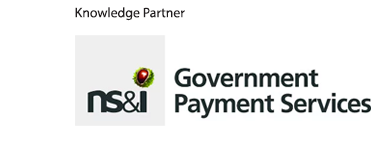US Digital Service recruitment reforms set for roll-out

A pilot programme that streamlines the US government’s federal hiring process is to be expanded, according to an update to the President’s Management Agenda published last month.
The US Digital Service (USDS) ran a six-month pilot programme last year to hire IT specialists at the Health and Human Services Department (HHS) and the National Park Service. It proved successful in filling roles quickly and effectively, and is being rolled out to other agencies as part of a wider agenda to improve the hiring process across government.
There are two key changes to the hiring process under the pilot programme. Jobseekers are required to submit a standard two-page CV, rather than the traditional “federal resume” that can range from five to 60 pages; and subject matter experts partner with HR specialists to create and conduct interview assessments built around core competences rather than person specifications, before considering an applicant qualified and applying veterans’ preference. In US law, military veterans applying for federal government jobs are given preference over civilian applicants, provided they are qualified for the role.
According to Government Executive, the pilot programme produced 36 qualified candidates – nearly 22% – at HHS, while at the National Park Service 11% of the 224 applicants proved qualified. Each hired seven people, and officials sought to place a further six applicants in jobs elsewhere in the Interior Department.
This hiring rate is well above average. As Government Executive points out, more than half of job announcements posted on USA Jobs, the government’s official employment site, are cancelled without agencies extending a job offer.
The pilot also sped up the hiring process. HHS selected its new hires within 11 days of receiving the list of qualified candidates, while the National Park Service took 17 days to make selections. The average across government is 47 days.
Rollout to other agencies
The President’s Management Agenda update says that the US Digital Service, the Office of Management and Budget (OMB) and the Office of Personnel Management (OPM) are partnering to test and scale the hiring strategy, and have so far conducted more than 20 roadshow presentations to interested agencies.
“At least five of those are moving forward to pilot this assessment strategy,” the update says, though it does not identify which ones.
In addition, USDS and OPM are working together to use the new hiring strategy to identify qualified candidates to fill positions across government. The update says 10 subject matter experts from six agencies have volunteered to participate in the selection process, which will result in a shared list of qualified candidates that will be made available to all agencies.
The agenda update also says that “USDS is working with OPM to prototype and test technology to facilitate strong subject matter expert engagement in critical parts of this process”.
Ultimately, the government’s ambition – as set out in the update – is to make it quicker and easier to recruit top talent; to enable hiring managers to more easily compare applicants’ qualifications, competencies and experience; to develop the capacity and skills of HR professionals; to introduce robotic process automation and artificial intelligence (AI) into the hiring process; to improve the applicant experience; and to scrap burdensome policies and procedures.
Feds look to leave
News of the expansion of the new hiring process coincides with the release of a report which found that federal employees are increasingly interested in leaving government for private sector technology jobs.
While interest in tech jobs has declined across the US workforce over the last two years, research conducted by the employment website Indeed.com and reported by Government Executive found an 11% rise in public servants’ interest in taking private sector tech jobs.
Pay is thought to be the main driver. The average annual salary for private sector workers in tech is about US$40,000 (€36,000), Indeed found – higher than the average government salary.
Last winter’s partial government shutdown is also thought to have played a part. Federal workers’ interest in private sector tech jobs spiked during that time.
More broadly, the latest Federal Employee Viewpoint Survey found that 10% of respondents had looked for another job as a result of the shutdown.























